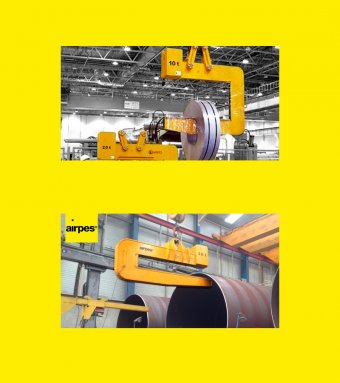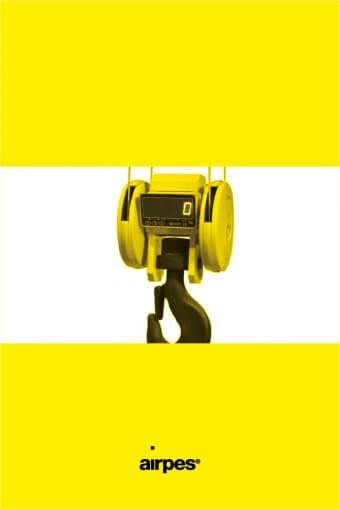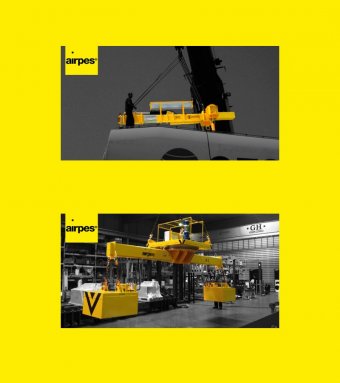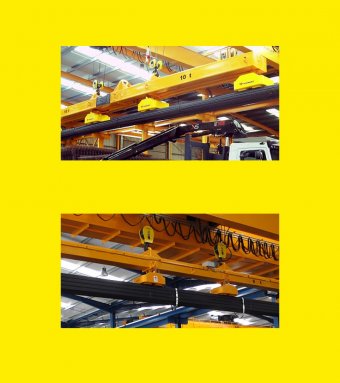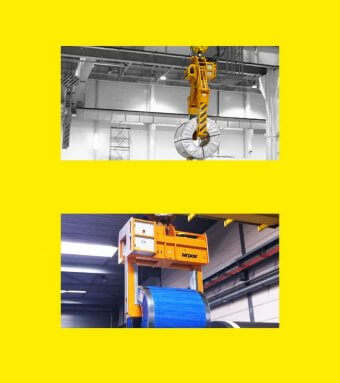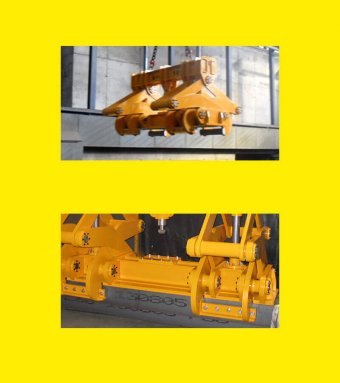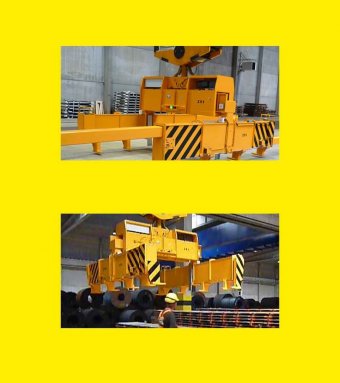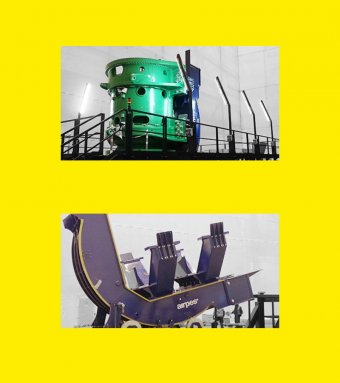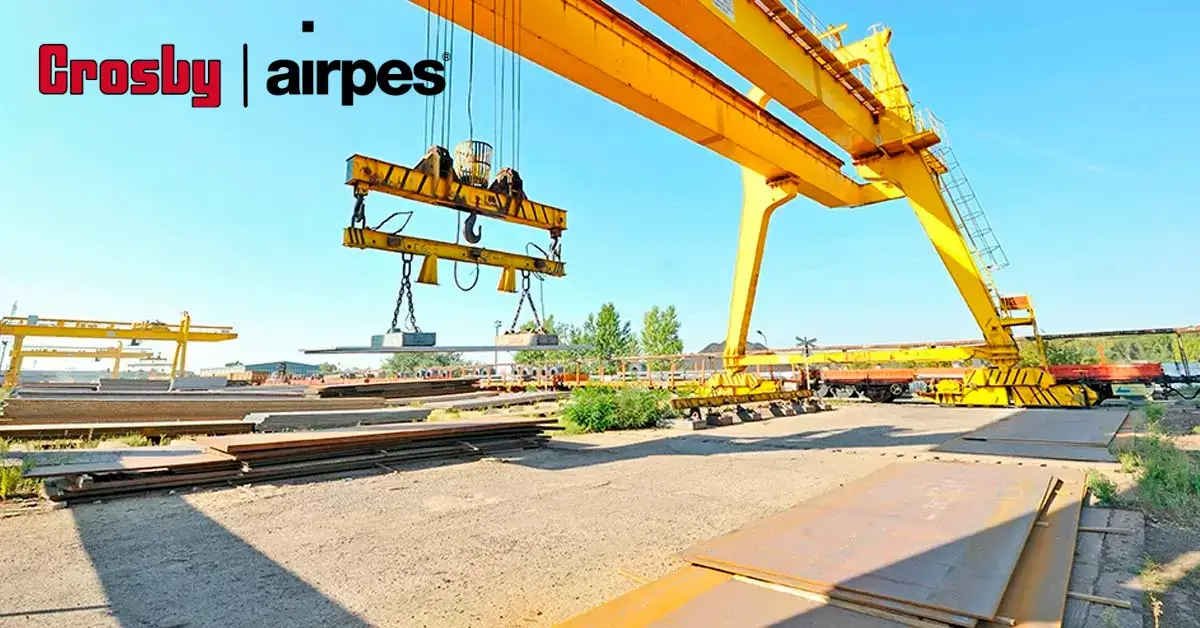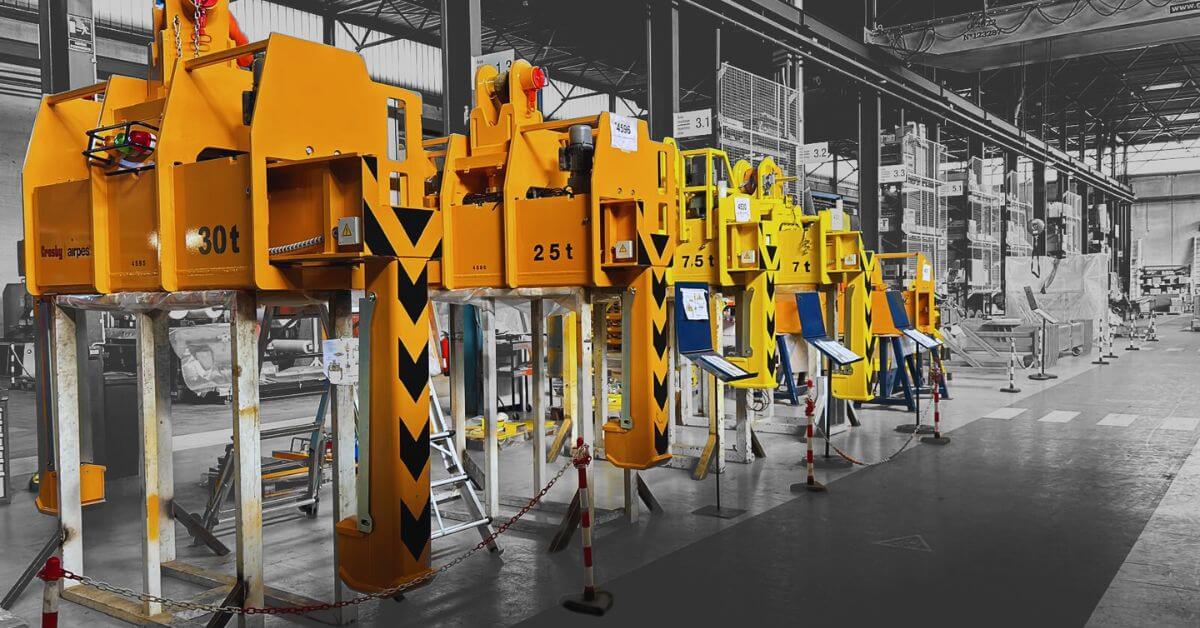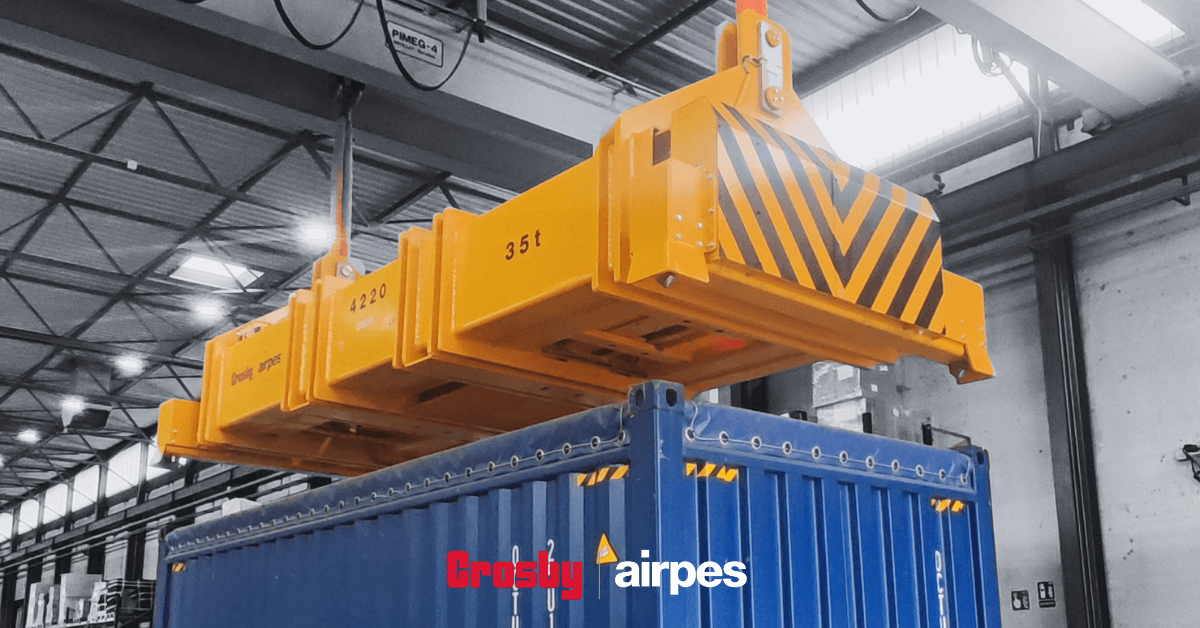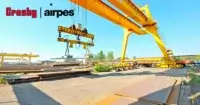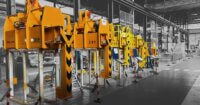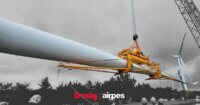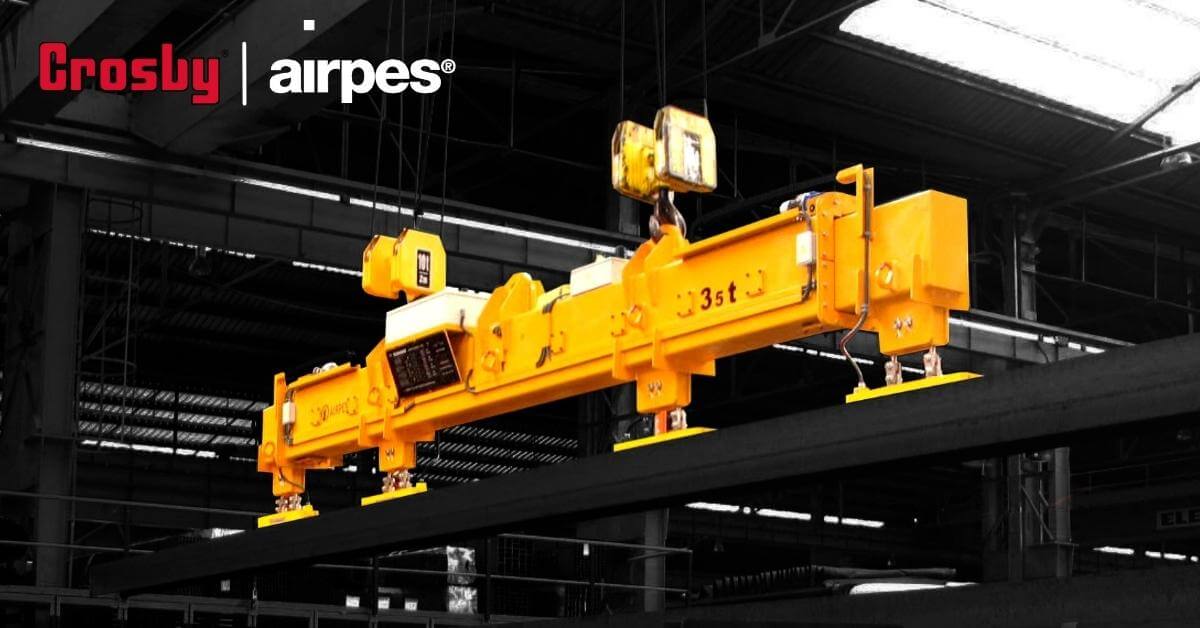
Lifting or moving large, heavy materials inside manufacturing and warehousing facilities or in the open air is risky and needs precision, efficiency, and safety. The right lifting equipment and the proper automation functions are essential to improving productivity and performance.
The success of your workflow may depend on choosing the right lifting tools. To help you make the best decisions for your company’s needs, we will review the most common types of lifting devices you are likely to encounter and the below-the-hook solutions we can offer you.
Main lifting devices types in manufacturing and warehousing facilities
Overhead cranes or bridge cranes
Overhead cranes or bridge cranes work on parallel tracks or girders. In the middle is a bridge that moves along the runway.
Overhead cranes and runways can be designed to be suspended from existing structures or installed on floor-standing freestanding structures. The specific design of a crane system depends on considering several variables, such as existing structure, headroom, span, capacity, etc.
Manufacturing facilities use overhead cranes or bridge cranes as part of their workflow to ensure smooth and efficient material handling. You can use them to move loading trays with products or materials. Steel or paper mills use overhead cranes to move material along a fixed path from one station to the next throughout the production process.
You may be interested in: 6 overhead crane safety tips to protect your workers
Gantry cranes
Gantry cranes, also called portal cranes, consist of two vertical legs with a cross beam or girder affixed to the top. The shaft usually has an underhung hoist that can move back and forth.
Gantry cranes are adaptable for the largest outdoor or small indoor jobs. They are designed to straddle workstations, benches, boats, or buildings.
Gantry cranes can be of different sizes. The big ones are large and robust enough to lift shipping vessels. Small and portable gantry cranes are easy to move around your facility or take to operation sites. For example, you can use them for removing engines from vehicles.
You may be interested in: Gantry Crane: uses and variations
Hoists
Hoists are critical to workplace efficiency. Chain hoists are commonly used lifting systems in production workshops and warehouses. They are usually small and can easily lift awkwardly shaped objects or objects too heavy to lift by hand. Wire rope hoists are also commonly used, usually designed for larger and more frequent loads.
Hoists can be pneumatic, electric, or manually operated. They use durable hooks and chains or wire ropes to lift objects. The crane can be attached to fixed ceiling points, monorail, or overhead cranes.
Jib cranes
A jib crane is a horizontal crane arm, called a jib, attached to a fixed vertical column. The boom can be mounted on the floor or wall, making it ideal for manufacturing facilities. Depending on the application, rotation can be manual or electric.
You can install them in work areas to perform specialized, repetitive lifting tasks, thus simplifying the production line.
Industrial lifting equipment: below the hook solutions
Below-the-hook devices are the connection point between the crane and the load. Many devices are available depending on the load’s size, weight, shape, and center of gravity.
Hooks
Hooks are one of the most commonly used below-the-hook devices for handling loads such as coils. You can insert vertical or horizontal hooks into the center of the coil or tube to move it. Hooks may offer rotation for more support and control.
The C-Hook model stands out. It can be adapted to your load configuration, weight, lifting area, and headroom needs. C-Hooks are a great option if you work with wire or rope coils and need heavy-duty machinery to handle them.
You can also use a hook block with a scale. It calculates the weight of the elevated load while in motion without moving it to steady weighing equipment.
-
C-Hooks for lifting heavy loads
What is a C-Hook? A C-Hook is a specialized lifting device designed for handling coils of wire, steel, aluminum, or…C-Hooks for lifting heavy loadsApril 30, 2025
-
HOOK BLOCK SCALE ATP-100
The ATP hook block scale is an electronic weighing system of great precision, thought to be adapted to any type…HOOK BLOCK SCALE ATP-100November 15, 2020
Lifting beams
A lifting beam is one of the most valuable devices to handle loads in a facility. They have a long life span and are low-maintenance factor rigging gear.
Lifting beams allow multiple lifting points for longer loads. Numerous attachment points also prevent excessive movement when transporting a load offering more security.
You can also use electromagnetic options to lift and transport metals, such as steel plates. Permanent electromagnet beams modular systems are equipped with a load sensor to ensure that the user can only release the load once it is on the ground, which makes them a very safe option.
-
LIFTING BEAM
High-Performance lifting beams by Airpes Airpes® specializes in designing and manufacturing lifting beams tailored for industrial lifting operations. We provide…LIFTING BEAMSeptember 22, 2020
-
LIFTING ELECTRO MAGNET
We have the most interesting products in the industrial electromagnet field because we are in charge of the whole lifting electromagnet design, but…LIFTING ELECTRO MAGNETSeptember 22, 2020
Tongs
Lifting tongs designs are engineered to safely grab and lift various materials and objects from any crane configuration. You can use lifting tongs in multiple applications for a generic or specific job.
There are many different kinds of tongs. Two of the most common are the coil lifting tongs, designed with a mechanized opening to handle coils of different types of material, and the scissor lifting tongs, which close the load by applying pressure.
-
COIL LIFTING TONGS
Check out our vertical coil tongs, designed by our engineers to meet every customers' requests on mechanical features, electronic components,…COIL LIFTING TONGSSeptember 22, 2020
-
SCISSOR LIFTING TONGS
Scissor lifting tongs are designed and manufactured by Airpes to lift and handle different types of loads. Our product features…SCISSOR LIFTING TONGSSeptember 22, 2020
Sheet lifter
Sheet lifters are ideal for large flat items such as drywall, plywood, glass, or metal. Sheet lifters provide fast and smooth leg adjustment and can apply additional force to the sides of the loads. They use support brackets that are raised by supporting the edge of the sheet, preventing damage and falls.
It doesn’t matter if loads are square or ring and round-shaped; sheet lifters can be adapted to your requirements.
-
Sheet Lifters for Safe and Efficient Steel Plate Handling
At Crosby Airpes, we design and manufacture sheet lifters that guarantee safe, efficient, and precise handling of steel plates and…Sheet Lifters for Safe and Efficient Steel Plate HandlingSeptember 22, 2020
Rotator
With a load rotator, you can move the material 360 degrees and stop it in any position.
Load rotators have a high capacity to rotate materials like tower segments for wind turbines, nacelles, and any product using fixed or moveable pulleys.
-
LOAD ROTATOR
Meet our range of high capacity electric powered rotators designed to rotate all types of materials. It can be adapted to…LOAD ROTATORSeptember 22, 2020
Crosby Airpes offers you the lifting equipment you need
We have broad experience designing and manufacturing on-demand lifting tools adapted to our customers’ needs.

